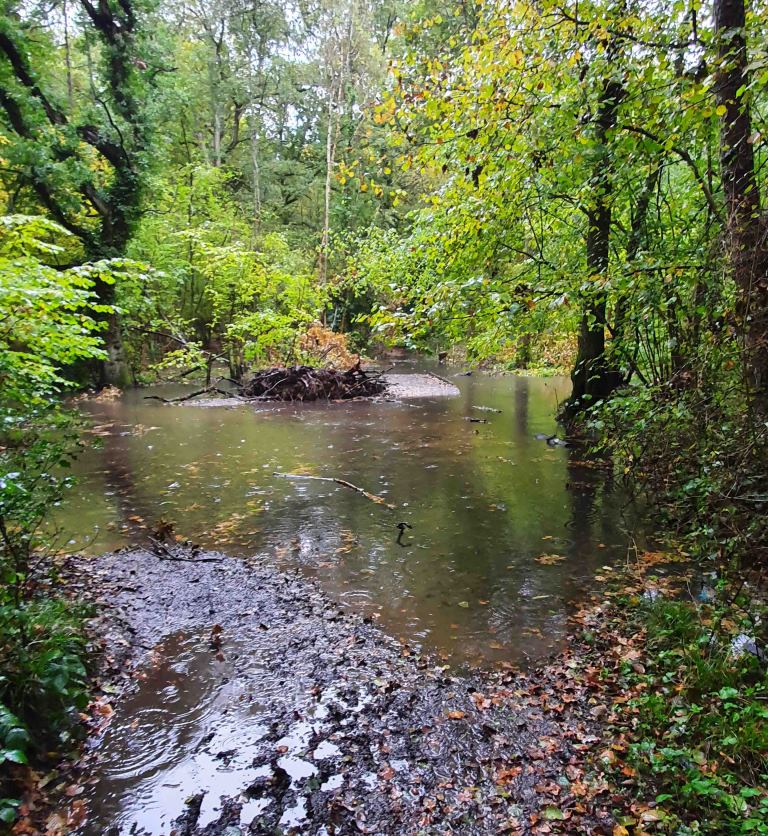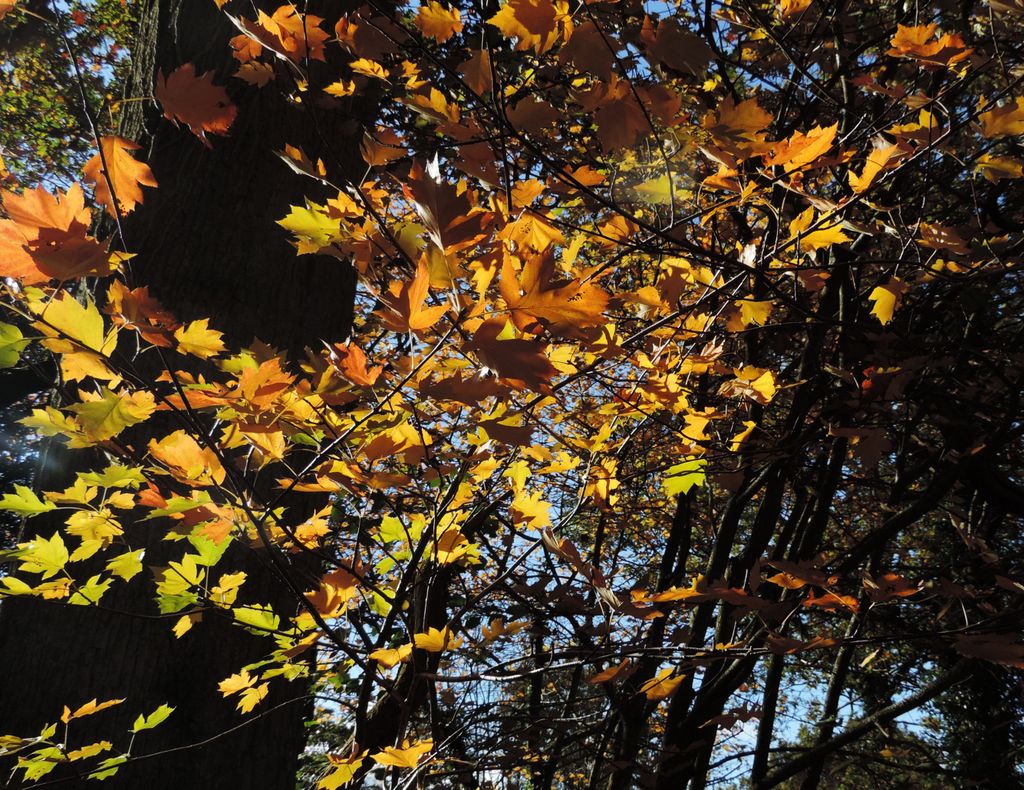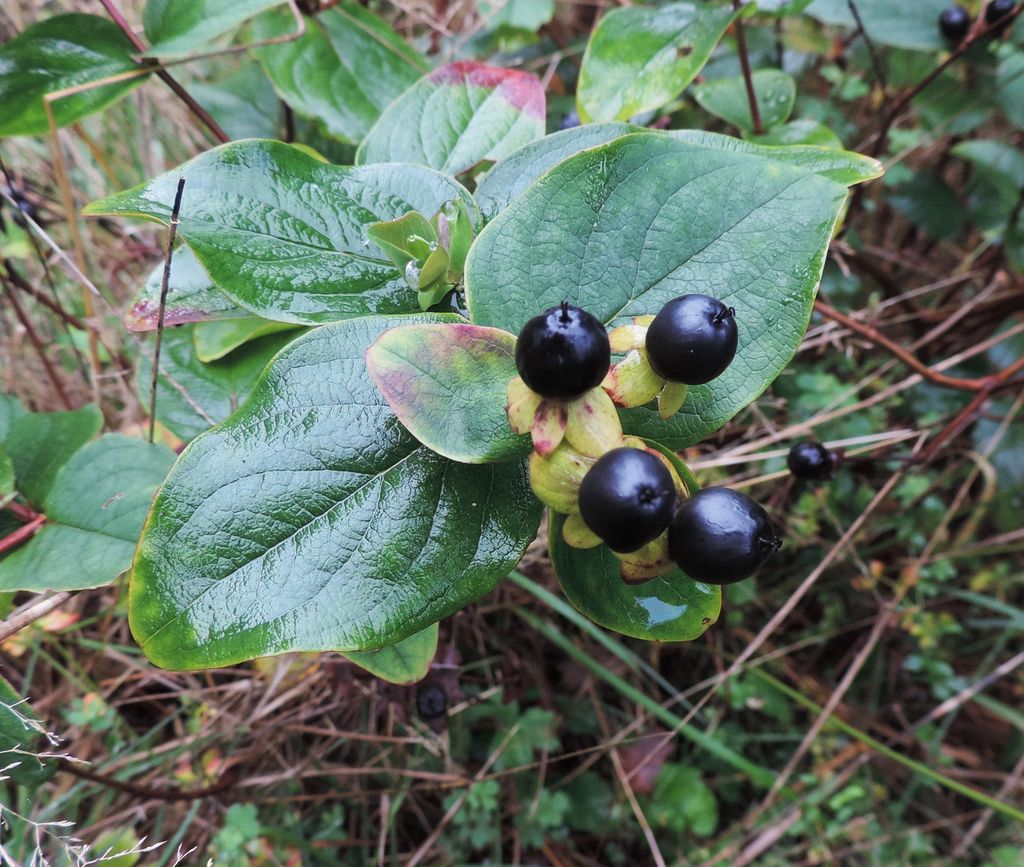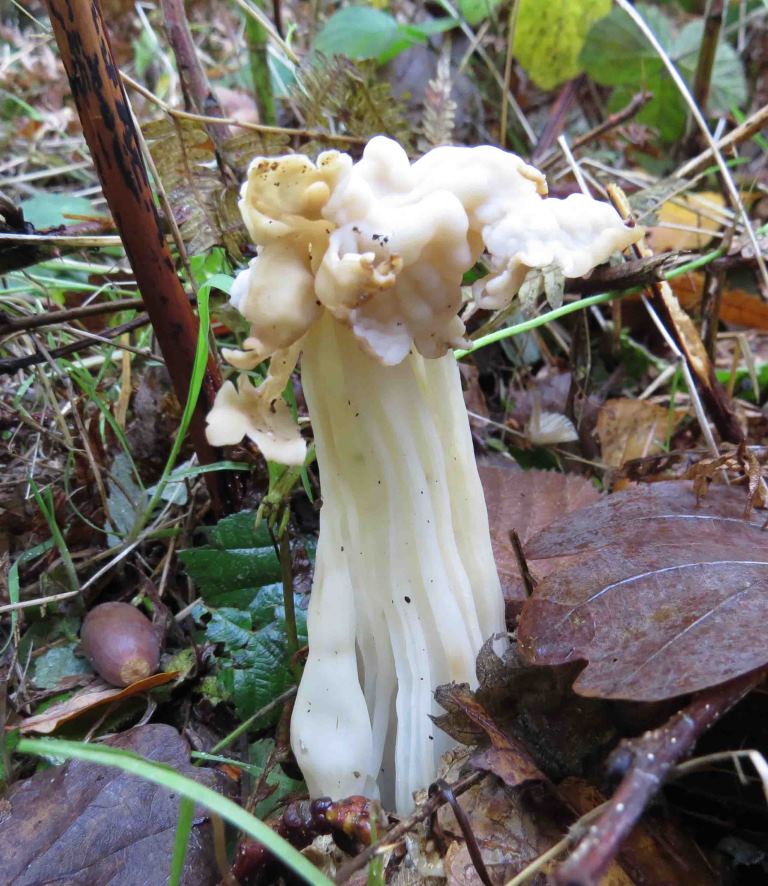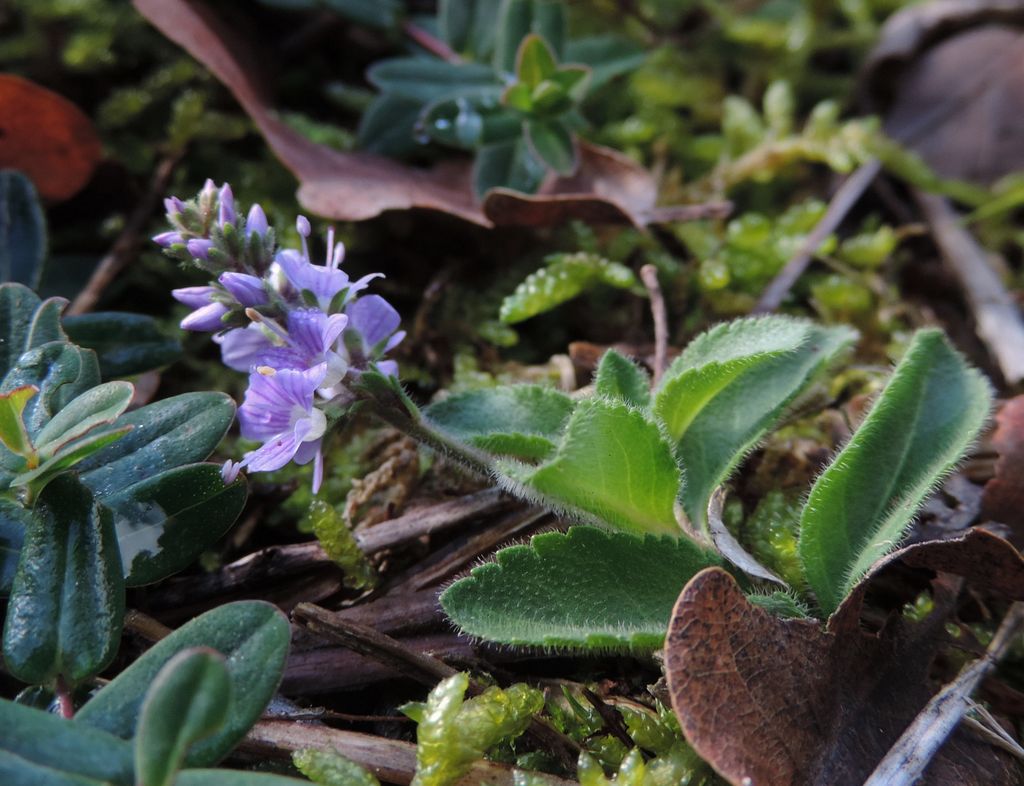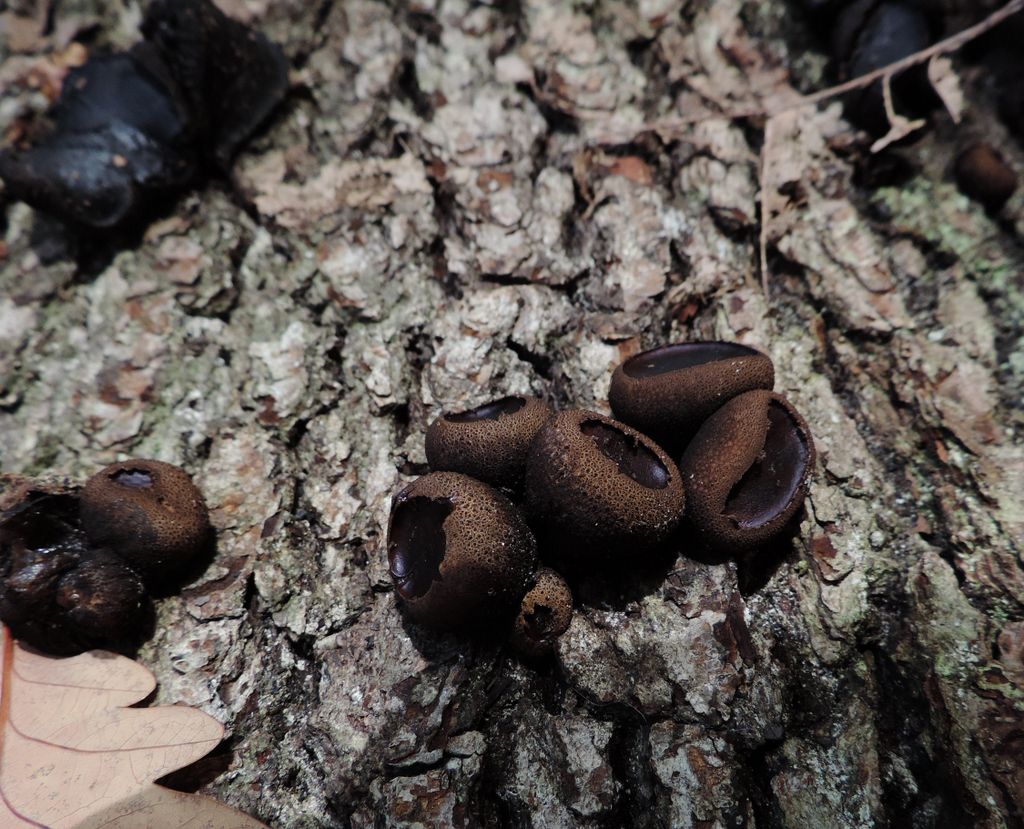The October mid-week walk round Pamber Forest, led by Jan and Laurie Haseler, took place a record-breaking three times. It was originally scheduled for Wednesday 21 October but, following a forecast of heavy rain, the majority of participants opted to go round in sunshine on the following morning. However a hardy group of five set out regardless of the weather on the original date. The walks started from the Impstone Road car park at Pamber Heath and headed down the track on the west side of Lord’s Wood. This is part of the extensive cattle-grazed wood-pasture adjacent to Silchester Common. The first of many Wild Service-trees were soon spotted in the wood beside the track. Clumps of Hard Fern on the bank beside the track showed the finer fertile fronds standing up in the centre and the infertile fronds round the base. At the bottom of the hill, a gate leads into Pamber Forest, which is managed as a nature reserve by the Hampshire and Isle of Wight Wildlife Trust. At this point, the Wednesday walkers were faced with an extensive area of floodwater, making the bridge over what is normally a small stream unreachable. Fortunately, after a short diversion via the next bridge, the walk was soon back on course. By the next morning, the floods had receded and the original bridge was crossable.
The next section of the walk was along a wide grassy ride, with tall woodland on one side and a succession of coppiced plots on the other. A number of Wild Service-trees were found along the woodland edge. Wild Service-trees are one of the first trees to change colour in autumn. For a few weeks in early to mid October, the glorious yellow, orange and red tones of their leaves stand out in contrast to the predominantly green tones of the other trees, making them easy to spot. Finds along the grassy ride included several seed heads of Broad-leaved Helleborine, a few Betony plants still in flower and the glossy black berries of Tutsan. The route then turned southwards along the main ride which bisects Pamber Forest. Nearby were a number of plants of Wood Horsetail with distinctive drooping branches which are in turn branched themselves. One of the participants on the walk, Jan Welsh, had originally found the colony back in 1973. According to the Hampshire Rare Plant Register, Pamber Forest is its stronghold in the north of the county.
Much of the Forest lies on London Clay, but this is overlain in places by the acid sands of the Windlesham Formation. Here, the vegetation is dominated by Bilberry, Heather, Gorse and Bracken. An oak overhanging a particularly sandy stretch of path showed the characteristic long-stemmed leaves of the Sessile Oak, in contrast to the almost stemless leaves of the Pedunculate Oak which had been inspected earlier in the walk. A Sparrowhawk flew across the open heathy area and into the adjacent woodland. The track then turned southwards and re-entered woodland, where three specimens of the White Saddle fungus Helvella crispa were found beside the path. Continuing parallel with the western edge of the forest, there were several more clumps of Wild Service-trees. The route then turned eastwards along a narrow path with yet more Wild Service-trees before coming to an open recently-coppiced area where the deer fence was broken. Under a Birch tree at the side of the path were a number of red and white Fly Agaric fungi. The path led into a little meadow area, where there were abundant seed heads of Betony, together with a few plants which were still in flower. Several Common Carder bees were nectaring on the flowers of Devil’s-bit Scabious. The leaves of Bitter-vetch and Yellow Stag’s-horn fungus were other finds here. The walk continued eastwards along a ride with flowery margins, where the trees had been cut back in places to form sheltered scallops on either side of the path. Flowering Wood Spurge in one of the scallops was a surprise find. A Crab Apple had dropped an abundant crop of small yellow fruit and a Speckled Wood butterfly flew in the sunshine.
The route led back to the main ride, then turned northwards. A little way back from the track were three big Wild Service-trees, with smaller suckering trees nearby. The track was fringed by a dense thicket of Alder Buckthorn, some with black berries. At the next junction, the walkers turned eastwards along another wide ride with several more clumps of Wild Service-trees. The track climbed uphill and crossed the cattle grid into the wood pasture, which here is an open heathy area with scattered trees. The Wednesday walkers saw about seven of the cattle (which are surprisingly hard to spot amongst tall Bracken). The yellow flowers of Tormentil were abundant, and there were unseasonal flowers of Heath Speedwell and Heath Milkwort. After re-crossing the Silchester Brook, the walk continued back through Lord’s Wood. A fallen oak log had round black fungi which at first glance looked like King Arthur’s Cakes, but which on closer inspection turned out to be the jelly-like Black Bulgar. Finally, another clump of Wild Service-trees was spotted, bringing the combined total to 42 trees.
Pictures by Rob Stallard, Fiona Brown and Jan Haseler

